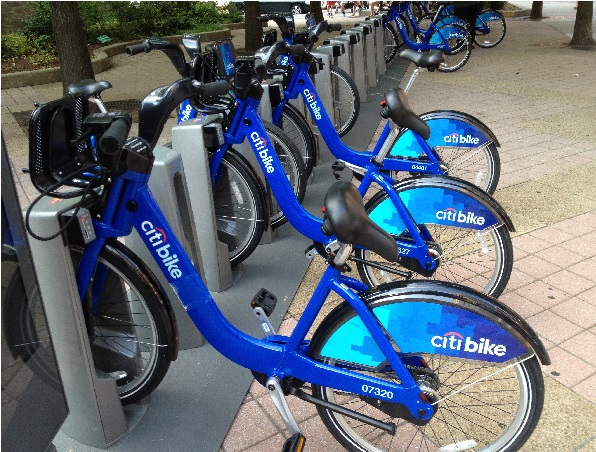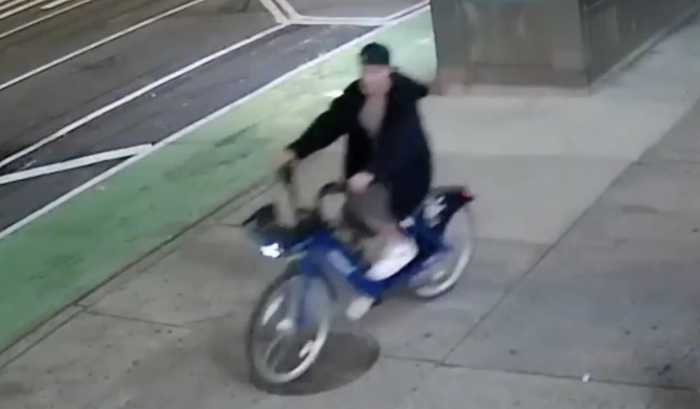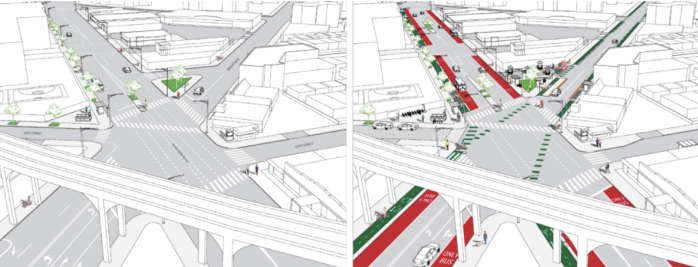A few weeks ago in my neighborhood of the East Village, I found myself on an unplanned journey wandering around with three other stranded travelers. All of us had returned home for the evening via Citi Bikes, yet there were no docks available to park. It took around 30 minutes of walking our bikes, wasting time, before we finally found some place to put them.
The experience was frustrating, and seems more common than it used to be. I, for once, could relate to the challenges of finding parking that the small number of New York City drivers so often—and so loudly—complain about.
Unlike finding a space for a large car, however—a fundamental problem of their geometry in a dense, highly populated area—there is no real excuse to not have enough parking for space-efficient Citi Bikes.
I have been trying to understand why the Citi Bike experience has felt so different lately. Fortunately, a study by NYCDOT and Citi Bike was released last week that has made things more clear: as the Citi Bike system has expanded, adding thousands of new riders from communities across New York City, that increased ridership has put more pressure on the system as a whole.
More bikes coming in from Queens, for example, means more docks are needed in Midtown, the Financial District, and yes, the Lower East Side, too, which remain extremely popular destinations. Lack of sufficient Citi Bike docking capacity–side-by-side with more bikes—means “balance issues” are much more likely to arise where some neighborhoods have too many bikes at one time, and others have too few.
The remedy, ultimately, is to put more docks and stations down. It’s like working out your core, and not just doing arm or leg day: It’s important for overall health, even if it’s less groundbreaking.
The study projected that a lack of sufficient Citi Bike density meant that up to four million rides that would have otherwise been taken by Citi Bike were instead taken by other means. Some would-be riders opted for public transit, and some ended up walking, but surely a significant number took a car, whether taxi, rideshare, or their own vehicle. Each trip taken by car that could have been taken by bike means more dangerous streets for New Yorkers, more congestion for that relatively small group that really do need to use a car and more particulate matter in our lungs.
Given my experience the other week, it also wasn’t a surprise to me to see on the study’s heat map that the Lower East Side stands out like a sore thumb as a neighborhood in need of docks.
My neighborhood serves as an ideal conduit between Brooklyn and Manhattan (via the Williamsburg and Manhattan bridges), as well as from Uptown Manhattan and Queens (via the Queensboro bridge) down to the Financial District. On weekends, it’s not uncommon to see older teenagers take out Citi Bikes and use the Avenue B Open Street to ride safely in a low-traffic setting. Students can also be seen using Citi Bike to get to and from their evening classes, dinner and social plans—there’s always an abundance of things to do in this neighborhood, and people love biking here!
Unfortunately, it is still too often a civic fight to get more Citi Bike docks where they’re clearly needed—mostly because so much curb space has been used for private car parking for so long, and a handful of residents used to having free parking year after year are loathe to give that perk up.
However, we no longer have the luxury of time for these extended battles over free car parking.. Citi Bikes are carbon-free transportation, a necessity in the climate crisis era in a city where a third of our emissions come from the transportation sector. Traffic deaths are also the highest they’ve been in nearly a decade in New York City (up 26 percent over last year), and studies show that with improved bike networks and infrastructure, streets get safer for all road users. On top of that, traffic is climbing to pre-pandemic levels.
Ultimately, there are few better ways to reduce gridlock than to get people out of their cars and on bikes—so long as those bikes are readily available, where and when you need them.
The Department of Transportation and the current and incoming mayoral administrations must swifty roll out more Citi Bike docks, allowing our bikeshare system to adjust as demand grows. As the program continues its much-needed outer borough expansion and more neighborhoods experience the joy of Citi Bike, becoming high-demand areas in their own right, I wish Citi Bike an abundance of docks and less red tape to cut through—not for their sake, but for ours.
Maerowitz is a writer and CUNY graduate student living in the East Village.








































